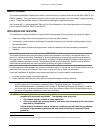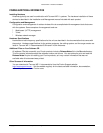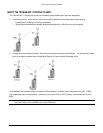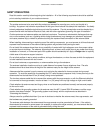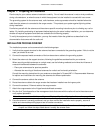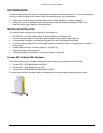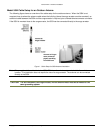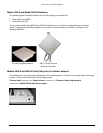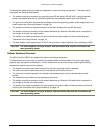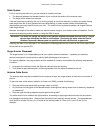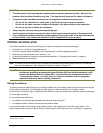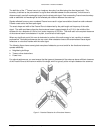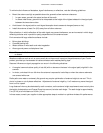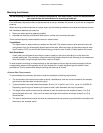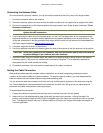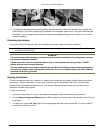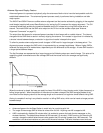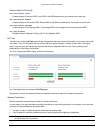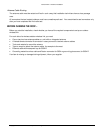
Tsunami MP.11 Antenna Installation
Copyright © 2006 Proxim Wireless Corporation. All rights reserved. 13
Cable System
Prior to mounting the radio unit, you are advised to carefully calculate:
• The distance between the intended location of your unit and the location of the antenna mast
• The height of the antenna on the mast
If the low-loss antenna cable for the unit is not long enough to cover this distance, you either can select another
cable length from the Proxim Systems low-loss cable offering, or select another location that satisfies the
requirements previously listed to mount your unit. The radio unit can be placed anywhere, as long as Ethernet
cable length allows.
Because the length of the antenna cable can affect the actual range of your outdoor antenna installation, Proxim
recommends selecting another location or using the 5054-R model.
WARNING! You must not change the length of the low-loss antenna cable used with the 5054 to a length
shorter than allowed by the radio’s certifications. Shortening the cable voids the Proxim
Wireless Corporation warranty and can conflict with radio certifications or approvals.
Installing the radio unit is described in the Installation and Management manual as well as the Quick Install Guide,
which come on the product CD.
Surge Arrestor Placement
The surge arrestor is an indispensable part of your outdoor antenna installation. It protects your sensitive
electronic equipment from transients or electro-static discharges at the antenna.
For optimal protection, the surge arrestor must be installed at a location that satisfies the following requirements.
A location:
• As close to the location at which the Ethernet cable will enter the building
• That allows for easy disconnection of the surge arrestor from the cable connected to the unit.
Antenna Cable Route
The antenna cable must be connected from the antenna through the surge arrestor to the antenna connector of
the unit.
To plan the route of the antenna cable for an indoor unit (5054), consider the following :
• Does the cable route require drilling through a wall or ceiling?
• Do you have a building plan of the desired location showing other cabling routes such as electricity, telephone
or networking?
• Does the type of building materials require special drilling tools?
The cable should not be installed into tight positions, as bending or applying excessive force to the connectors
can damage the antenna cable. Always allow the cable to bend naturally around corners. The recommended
bend radius is at least 100 mm (4 in) or more for the low-loss cable of 10 mm (0.4 in) and 15 mm (0.6 in)
diameter.



